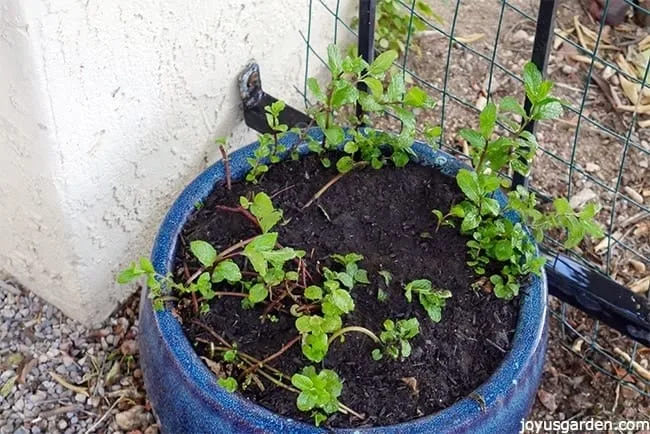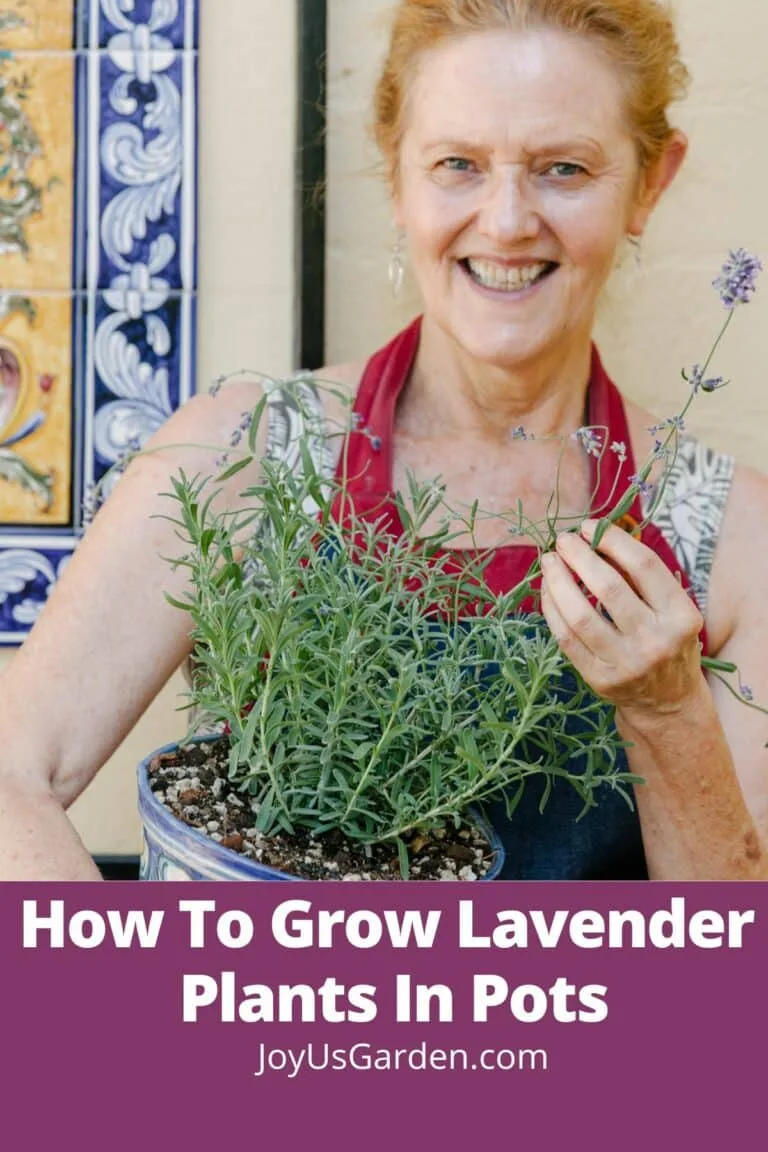How to Prune and Feed Mint Plants
Oh mint, what a wonderful herb you are. Not only is your smell and taste extremely appealing and a delight for the senses, but you look great in the garden too. I live in a temperate climate so by the end of January my Mojito Mint was looking like it needed and wanted a good cut back.
Plainly put, it had “the funk”. This is all about how to prune and feed mint in pots (or in the garden) to promote the new growth that we wait to see happen in spring.
Mint is a herbaceous perennial, like some of the salvias. You can think of it as tender above (the stems and leaves) and hardy (the roots) below. In colder climates its soft stems and leaves die back completely with the 1st hard frost and new growth appears next season when the weather warms.

If you’re new to the world of mint and live in a more temperate climate, don’t despair because yours is looking sad come winter. It’s just what mint does. By the way, there are many varieties and flavors of mint to choose from – some are hardier than others.
Here in Tucson, I needed to cut away the old stems. This mint was looking scraggly, leaves were turning yellowish and falling off and the new growth was already appearing in February.
Plainly put, you want to cut out the old to bring on the new. You’ll probably need to prune and clean your mint in mid-summer too because it grows like crazy.

I’ve found that mint doesn’t need fertilizing because of its natural, crazy fast growth habit. This is why it’s best to grow mint in a pot unless you want it to take over.
It does appreciate organic feeding with a handful or 2 of worm compost and a 1″ layer of compost in spring, which is especially true of mint grown in pots. After getting rid of the old growth you’ll want to gently poke the soil a bit to loosen it up before applying the good stuff.

Lesson learned: next year I’ll harvest and freeze all my mint leaves by mid-January. I use mint every day and want that new growth to appear as soon as possible.
This Mojito Mint is my new fav. What’s yours?
Happy gardening & thanks for stopping by,


You May Also Enjoy:






Oh, mint, what a wonderful herb you are indeed! 😀
I love mints! I love drinking them as tea.My favorites are peppermint,tarragon and chocomint.
Do you have more recommendations?:)
I’ve had a mint plant for several years now and I use it often, sometimes just drying the leaves when the mint needs to be pruned. It is an indoor plant to keep it safe from squirrels. My stems, however, don’t tend to grow up nice and tall, even when my leaves are big and healthy looking. They tend to droop and even curl. Am I doing something wrong? I’ve only begun to play with plants in the last 5 years or so, and I’ve learned mostly by trial and error, so any advice would be welcome.
Hi Sarah – Mint can be susceptible to verticillium wilt but I doubt you have that indoors. Have you ever cut your mint back? I grow my mints in pots outdoors & by the end of the season, the stems are definitely hanging down & looking a bit droopy. Mint likes to be totally cut back so the new growth can appear. Nell
I have cut it back, but when I do, it never seems to grow back right. I’ll snip right above a two- leaf section, and when the new growth comes in, there are 2 stems branching out from the cut point and they tend to be droopy above the new growth point and woody below it.
How can I control mint growing in my yard to make it fuller but less random? An I add a “filler plant” for the bare spots or replant it in containerS?
Dee – I grow mint in containers so it doesn’t take over. I know someone who uses container rims & barriers to keep it upright & from spreading too much. Nell